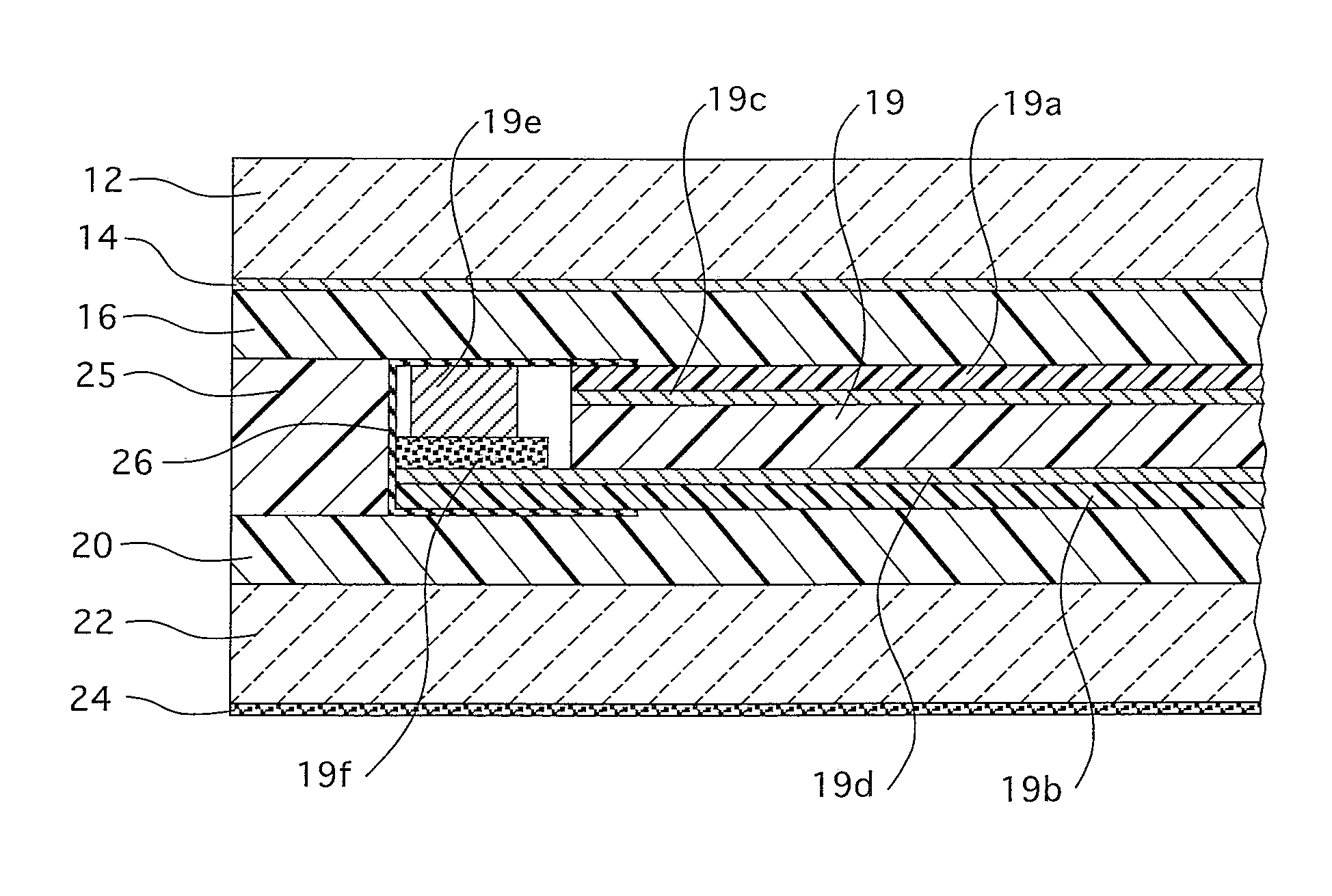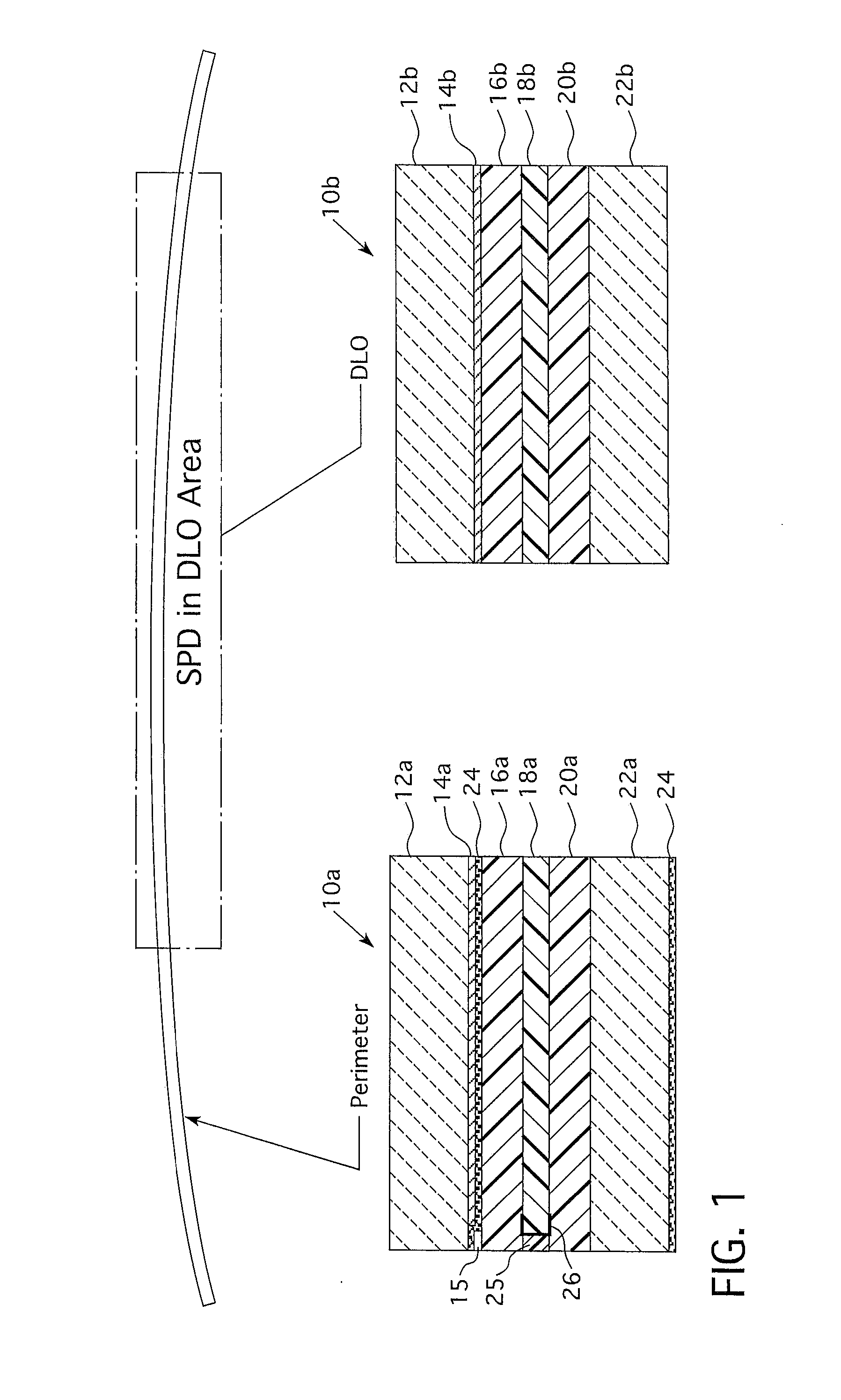Switchable automotive glazing
a technology of automotive window glazing and switchable film, which is applied in the direction of instruments, coatings, chemistry apparatuses and processes, etc., can solve the problems of prior art switchable glazing deterioration, compromising the capacity of switchable glazing, and not having adequate “serviceability" of switchable glazing
- Summary
- Abstract
- Description
- Claims
- Application Information
AI Technical Summary
Benefits of technology
Problems solved by technology
Method used
Image
Examples
Embodiment Construction
[0018]Embodiments of the presently disclosed invention are directed to a window glazing that is suitable, for example, in vehicles or buildings and other architectural structures. The glazing includes a switchable film such as, for example, a suspended particle device (“SPD”) film, a polymer dispersed liquid crystal (“PDLC”) film, or other film that selectively controls the transmittance of light through the glazing. The glazing includes an IR-reflective coating, such as a metal or metal-based coating, on one or more surfaces of one or more glass panes to reflect infrared (“IR”) light. The glazing also includes at least one UV absorptive interlayer. The glazing may further include an impermeable edging material for the electrochromic film to protect against penetration of contamination into the film. In some cases, the IR-reflective coating is further designed to reflect light in the UV spectrum and in part of the visible spectrum to further enhance UV protection of the electrochrom...
PUM
| Property | Measurement | Unit |
|---|---|---|
| wavelength | aaaaa | aaaaa |
| wavelengths | aaaaa | aaaaa |
| wavelength | aaaaa | aaaaa |
Abstract
Description
Claims
Application Information
 Login to View More
Login to View More - R&D
- Intellectual Property
- Life Sciences
- Materials
- Tech Scout
- Unparalleled Data Quality
- Higher Quality Content
- 60% Fewer Hallucinations
Browse by: Latest US Patents, China's latest patents, Technical Efficacy Thesaurus, Application Domain, Technology Topic, Popular Technical Reports.
© 2025 PatSnap. All rights reserved.Legal|Privacy policy|Modern Slavery Act Transparency Statement|Sitemap|About US| Contact US: help@patsnap.com



